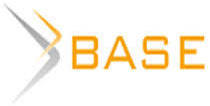The Motif of Human Transformation into an Animal in Medieval Commentaries on Ovid's “Metamorphoses”
The article examines the motif of transformation from human to animal in medieval commentaries on Ovid's «Metamorphoses». The relevance of this study is due to an interest in the representation of animal images in European Medieval culture and the need for a deeper understanding of mythographic tradition, which forms an important part of the overall reception of antiquity during the Middle Ages. The novelty of the approach lies in analyzing those parts of commentary that contain elements of bestialization within stories drawn from ancient mythology. The aim of the research is to identify specific features of moral reinterpretation applied by mythographers to bestiary-like characters. To achieve this goal, we have analyzed commentaries dealing with such well-known myths as the transformation of Ulysses' companions into pigs, Lycaon into a wolf, Io into a heifer, Callisto into a bear, among others. The conclusion is drawn that medieval commentators of “Metamorphoses” associated the theme of transformation into animals both with distortion of God's image resulting from sinning and with the moral degradation of characters leading ultimately to loss of their humanity.

















While nobody left any comments to this publication.
You can be first.
Boethius (2020), Utesheniye filosofiey [The Consolation of Philosophy], Transl. from Latin by Ukolova, V. I. and Ceytlin, M., intr. art. by Markov, A. V., notes by Ukolova, V. I., RIPOL-classic, Moscow, Russia (in Russ.).
Dubovaya, E. V. (2016), V krugu bestiarnykh obrazov [In the Circle of Bestial Images], FLINTA, Moscow, Russia (in Russ.).
Zelenin, D. A. (2015), “The rhetorical Techniques of combining human and animal in Emblematics”, in: Dovgy, O. L. (ed.), Bestiarnyy kod kultury: Sbornik statey [Bestiary and Cultural Code: Collection of articles], Intrada, Moscow, Russia, 40-48 (in Russ.).
Kazakova, E. V. (2015), “Animalistic Characters in Medieval French literary Minds of the twentieth Century (the Bestiaries and ‘Roman de Renart’ by Maurice Génévoix)”, in: Dovgy, O. L. (ed.), Bestiarnyy kod kul'tury: Sbornik statey [Bestiary and Cultural Code: Collection of articles], Intrada, Moscow, Russia, 94-100 (in Russ.).
Kislin, K. B. (2022), “The Medieval Reception of Ancient Mythology: the Experience of Systematization”, Research Result. SocialStudiesandHumanities, 8 (4), 35-47 (in Russ.). DOI: 10.18413/2408-932X-2022-8-4-0-4
Lozinskaya, E. V. (2023), “Animals in Literature: Forms of Presence and Functions”, Social Sciences and Humanities. Domestic and foreign literature. Series 7: Literary studies, 3, 27-45 (in Russ.). DOI: 10.31249/lit/2023.03.02
Nadyarnykh, M. F. (2015), “Mythology of Terratomorf, or Traces of chimeras in modern fiction”, in: Dovgy, O. L. (ed.), Bestiarnyy kod kultury: Sbornik statey [Bestiary and Cultural Code: Collection of articles], Intrada, Moscow, Russia, 78-93 (in Russ.).
Subbotina, O. V. (2015), “Visualization of the Sin in Engravings of the European Incunabula: sources and development of animal images of the Pride”, in: Dovgy, O. L. (ed.), Bestiarnyy kod kul'tury: Sbornik statey [Bestiary and Cultural Code: Collection of articles], Intrada, Moscow, Russia, 30-39 (in Russ.).
Barkan, L. (1986), The Gods Made Flesh: Metamorphosis and the Pursuit of Paganism, Yale University Press, New Haven and London, USA.
Bersuire, P. (2023), The Moralized Ovid, Transl. by Coulson, F. T. and Haynes, J., in Coulson, F. T. and Haynes, J. (ed.), Harvard University Press, Cambridge, USA.
Brumble, H. D. (1998), Classical Myths and Legends in the Middle Ages and Renaissance: A Dictionary of Allegorical Meanings, Greenwood Press, Westport, USA.
Chance, J. (1990), “Introduction”, in Chance, J. (ed.), The Mythographic Art: Classical Fables and the Rise of the Vernacular in Early France and England, University of Florida Press, Gainesville, USA, 3-44.
Copeland, R. and Struck, P. T. (2010), “Introduction”, in Copeland, R. and Struck, P. T. (ed.), The Cambridge Companion to Allegory, Cambridge University Press, Cambridge, UK, 1-11.
Coulson, F. T. (2007), “Ovid’s Transformation in Medieval France (ca. 1100-ca. 1350)”, in Keith, A. and Rupp, S. (eds), Metamorphosis: The Changing Face of Ovid in Medieval and Early Modern Europe, Centre for Reformation and Renaissance Studies, Toronto, Canada, 33-60.
Coulson, F. T. (ed.) (2015), The Vulgate Commentary on Ovid’s Metamorphoses. Book 1, Medieval Institute Publications, Kalamazoo, USA.
Dimmick, J. (2003), “Ovid in the Middle Ages: Authority and Poetry”, in Hardie, P. (ed.), The Cambridge Companion to Ovid, Cambridge University Press, New York, USA, 264-287.
Fumo, J. C. (2014), “Commentary and Collaboration in the Medieval Allegorical Tradition”, in Miller, J. F. and Newlands, C. E. (eds), A Handbook to the Reception to Ovid, Wiley-Blackwell, Oxford, UK, 114-128.
Gillespie, V. (2005), “From the Twelfth Century to c. 1450”, in Minnis, A. and Jonson, I. (eds), The Cambridge History of Literary Criticism, Vol. 2, The Middle Ages, Cambridge University Press, Cambridge, UK, 145-238.
Giovanni di Garlandia [John of Garland] (1933), Integumenta Ovidii [Ovid’s Integuments], by. Ghisalberti, F. (ed.), Casa Editrice Guiseppe Principato, Messina, Milano, Italy.
Ghisalberti, F. (1932), “Arnolfo d’Orléans: Un cultore di Ovidio nel secolo XII”, Memorie del Reale instituto Lombardo di scienze e lettere. Classe di lettere, scienze morali e storiche, 24 (4), 157-234 (in It.).
Ghisalberti, F. (1933), “Giovanni del Virgilio: Espositore delle Metamorfosi”, Giornale dantesco, 34(4), 3-110 (in It.).
Isidore of Seville (2006), The Etymologies, Transl. by Barney, S. A., Lewis, W. J., Beach, J. A. and Berghof, O., in Barney, S. A., Lewis, W. J., Beach, J. A., Berghof, O. (eds), Cambridge University Press, Cambridge, USA.
Knox, P. E. (2009), “Commenting on Ovid”, in Knox, P. E. (ed.), A Companion to Ovid, Wiley-Blackwell, Malden, USA, 327-340.
McKinley, K. L. (1996), “The Medieval Commentary Tradition 1100-1500 on Metamorphoses 10”, Viator, 27, 117-149. DOI: 10.1484/J.VIATOR.2.301124
Ortiz Robles, M. (2016), Literature and Animal Studies, Routledge, Abingdon and New York, UK and USA.